Our lives consist of transitions. We move from place A to place B. Our feelings can bounce from happy to sad without much of a reason. World events seem to escalate and evolve before our very eyes. The constant is that change is inevitable.
In this post, you will read about my attempts to transform a Vue 2 App implementation of The Game of Life. The objective is to take this simple application with no tests through a metamorphic process that will include:
- Bringing up unit test coverage with reports
- Improving readability via types in TypeScript and removing complexity through refactoring
- A version upgrade to the newer Vue 3 framework
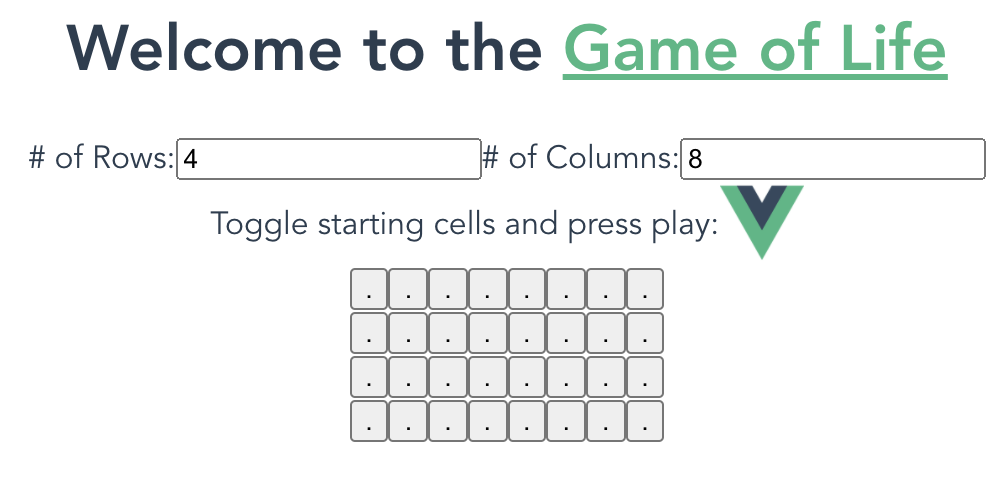
This might seem ambitious to tackle in just a single post, but I promise it will be rewarding to understand the thought process.
Handling Multiple Objectives
There are many ways to update a multifaceted project. Luckily, the trusty Vue CLI can get the job done for two out of the three steps mentioned above. It has plugins for adding Jest and TypeScript, which are painless (though they require some manual intervention). Upgrading to Vue 3 has docs that provide guidance, but is the most complex step.
So what is the best way to proceed? First, understand the current state of the app. Second, test out the transitional steps via Git history and branches.
State of the Vue-nion
A quick way to get a project overview is through the Vue CLI GUI. Run the following command to open it:
vue ui
Import the project by file system navigation. Now it is easy to observe existing plugins, dependencies, configurations, and package manager tasks of the project. Plugins might include the Vue router or Vuex for state management, whereas dependencies could include Axios for network calls or Vee-Validate forms. New plugins and dependencies can be added graphically via the dashboard here.
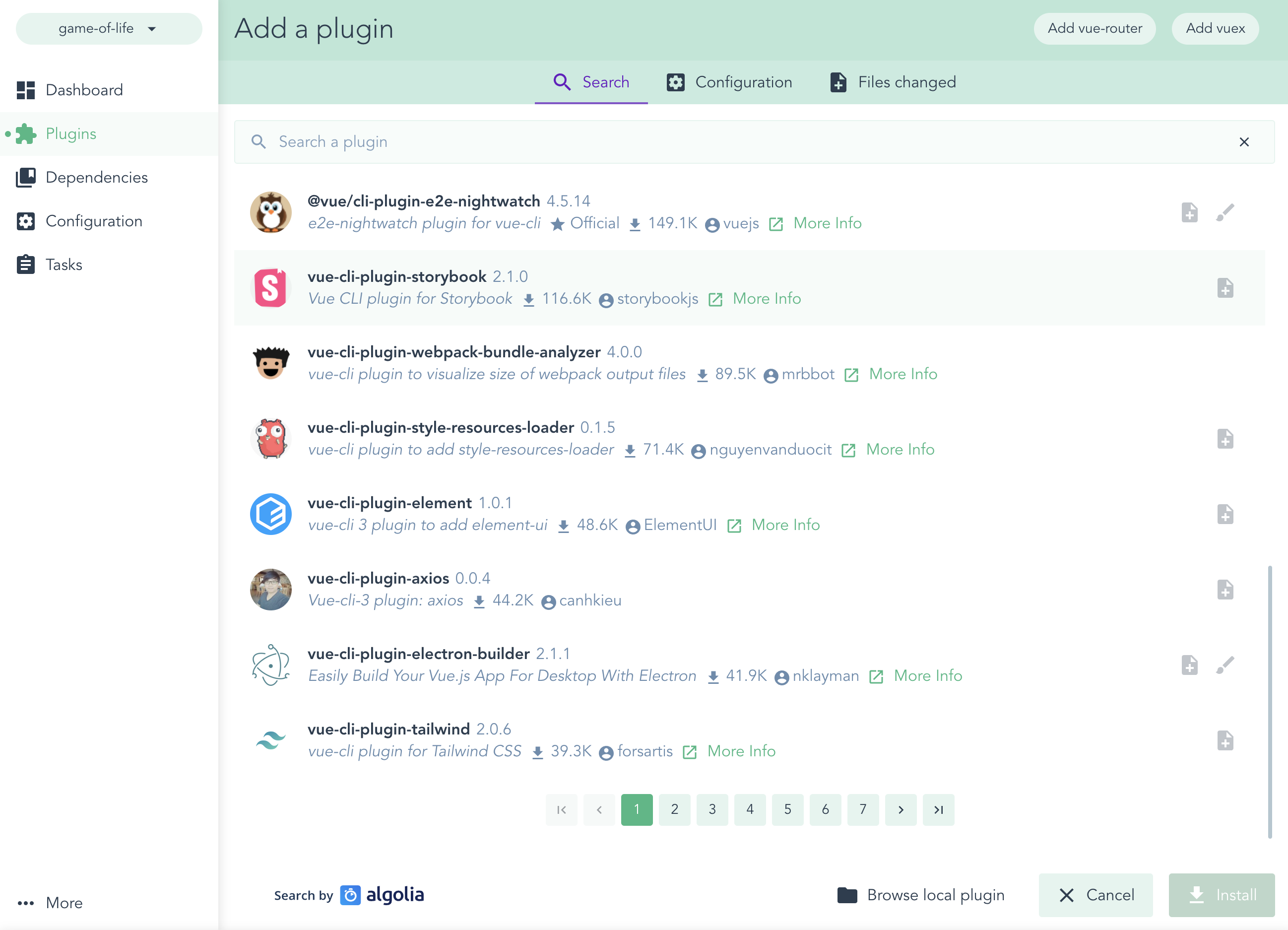
Depending on project size, the list of plugins and dependencies might be extensive when exploring migration feasibility. Does a third party library like Vee-Validate have native TypeScript support, or will a custom solution need to be considered? Is the Vue router integrated differently in Vue 2 versus 3? The coupling degree of app-to-dependencies is a sizeable factor in the level of effort.
Testing the Waters
The first step will be to add tests. While it does add the Jest plugin (and thus complexity during the version upgrade), this is the best step to start with as testing suites are crucial to overall confidence that everything works as expected. These tests will ensure functionality without manually checking every part of the application. They are indispensable now and as the app evolves.
Add this Jest plugin via the Vue CLI GUI or by running the following command in the root directory of the project:
vue add unit-jest
It not only modifies the package.json, it also adds a jest.config.js file to the root and example.spec.js file under a /tests folder. Run the new unit testing command:
npm run test:unit
See how it yields pretty minimal output:
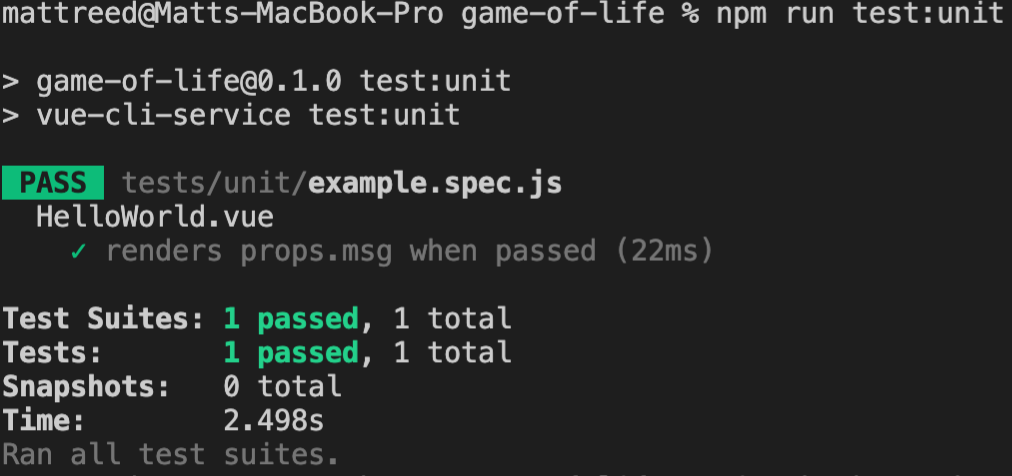
There is no information on the GameOfLife.vue or GameOfLife.component.js files right out of the box. It only runs the example.spec.js for testing HelloWorld.vue. Adding a GameOfLife.spec.js file with a fundamental evaluation is picked up when we run the unit testing command again:
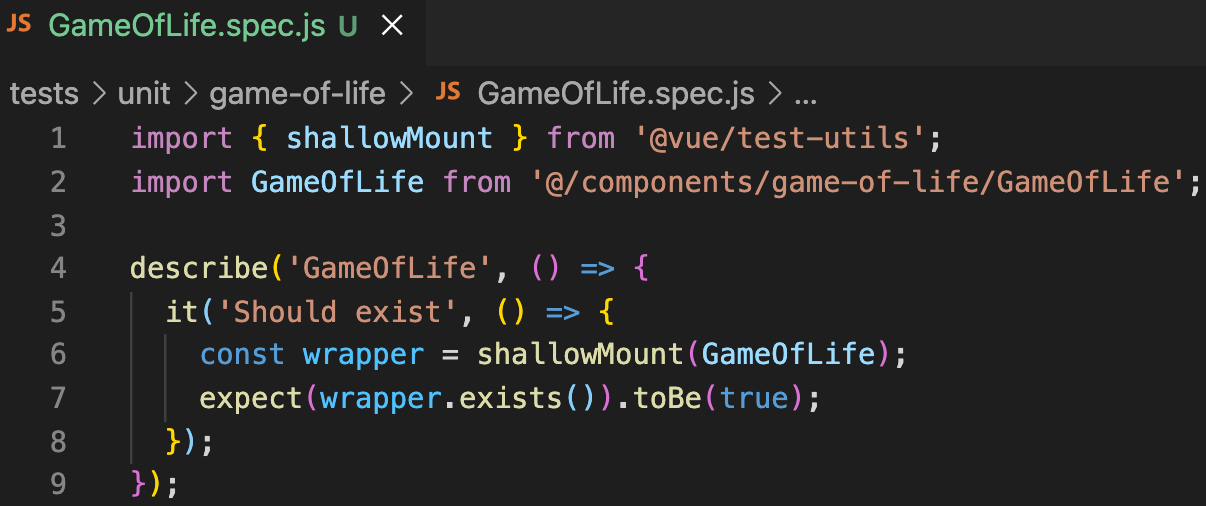
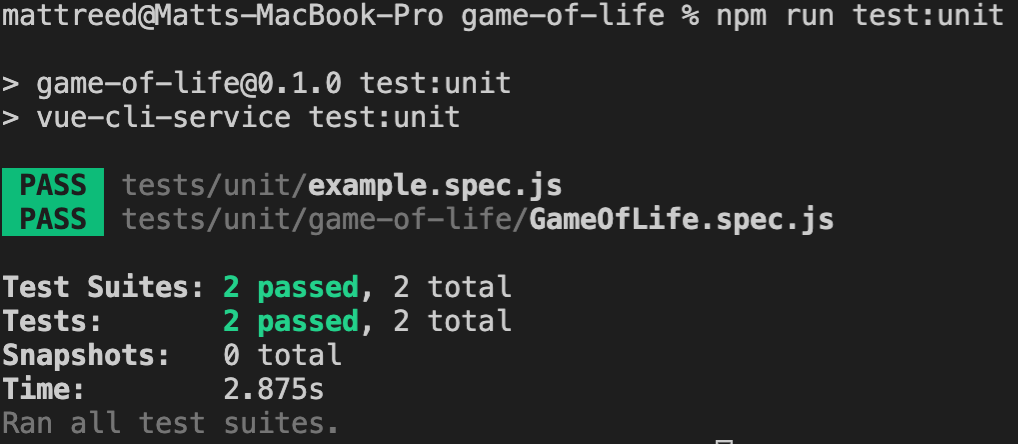
Coverage Reports in Jest
Despite showing "PASS," it is not enough to ensure proper functionality. Introducing the concept of Code Coverage should direct attention towards the untested lines. With the intent that this app will utilize TypeScript soon, this configuration to the jest.config.js will tell Jest to collect coverage reports and display them in the console.
By removing the unnecessary example.spec.js and HelloWorld.vue files and adding a basic test for App.js, the output is now more helpful:
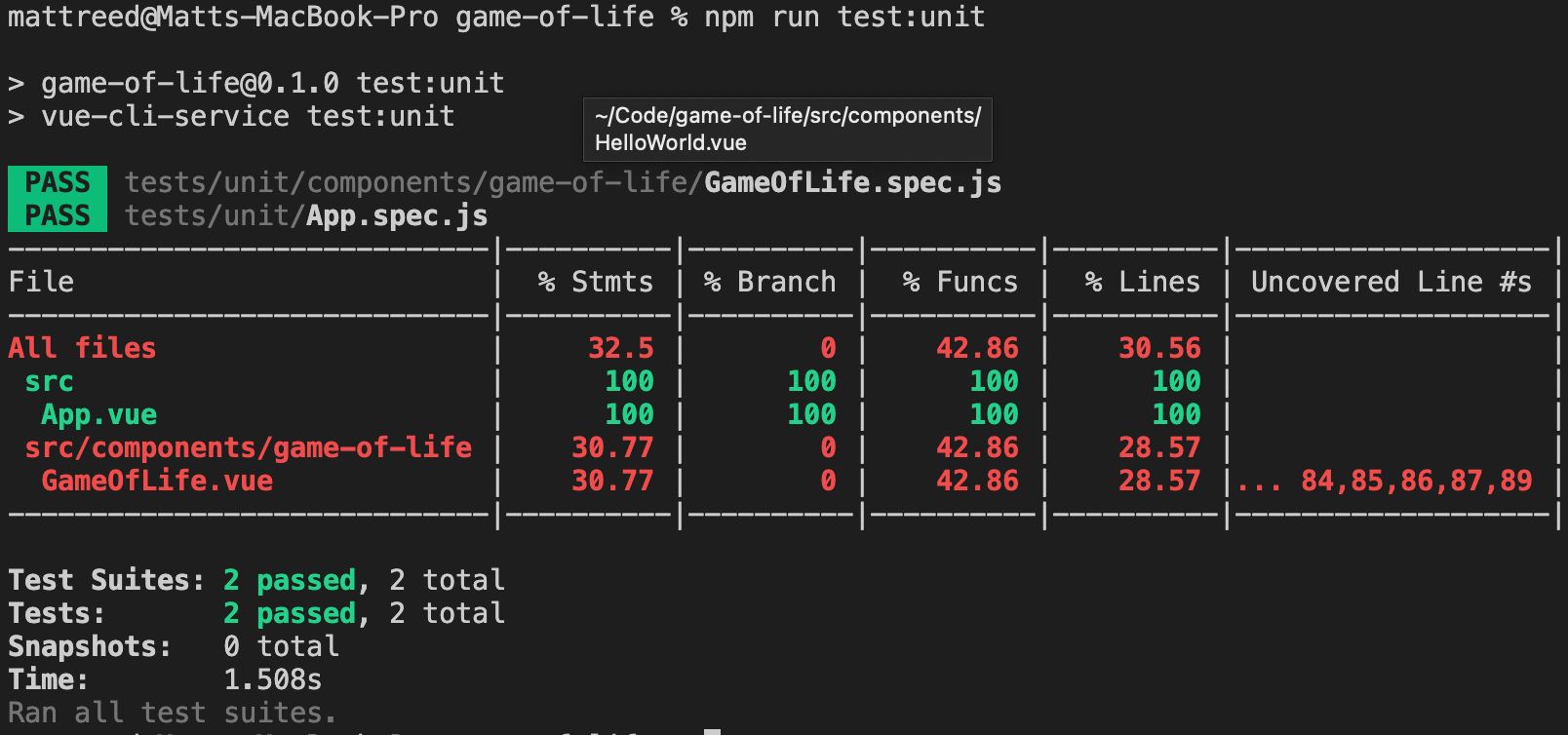
One last tip before bringing up the code coverage is to add this command to the "scripts" section of the package.json in order to run the tests continuously:
"test:unit:watch": "vue-cli-service test:unit --watch --coverage"
With enough tests to bring the coverage reports up to compliant levels (the general consensus is typically > 80%, but be sure to hit any edge cases!), the console output may look more like this:
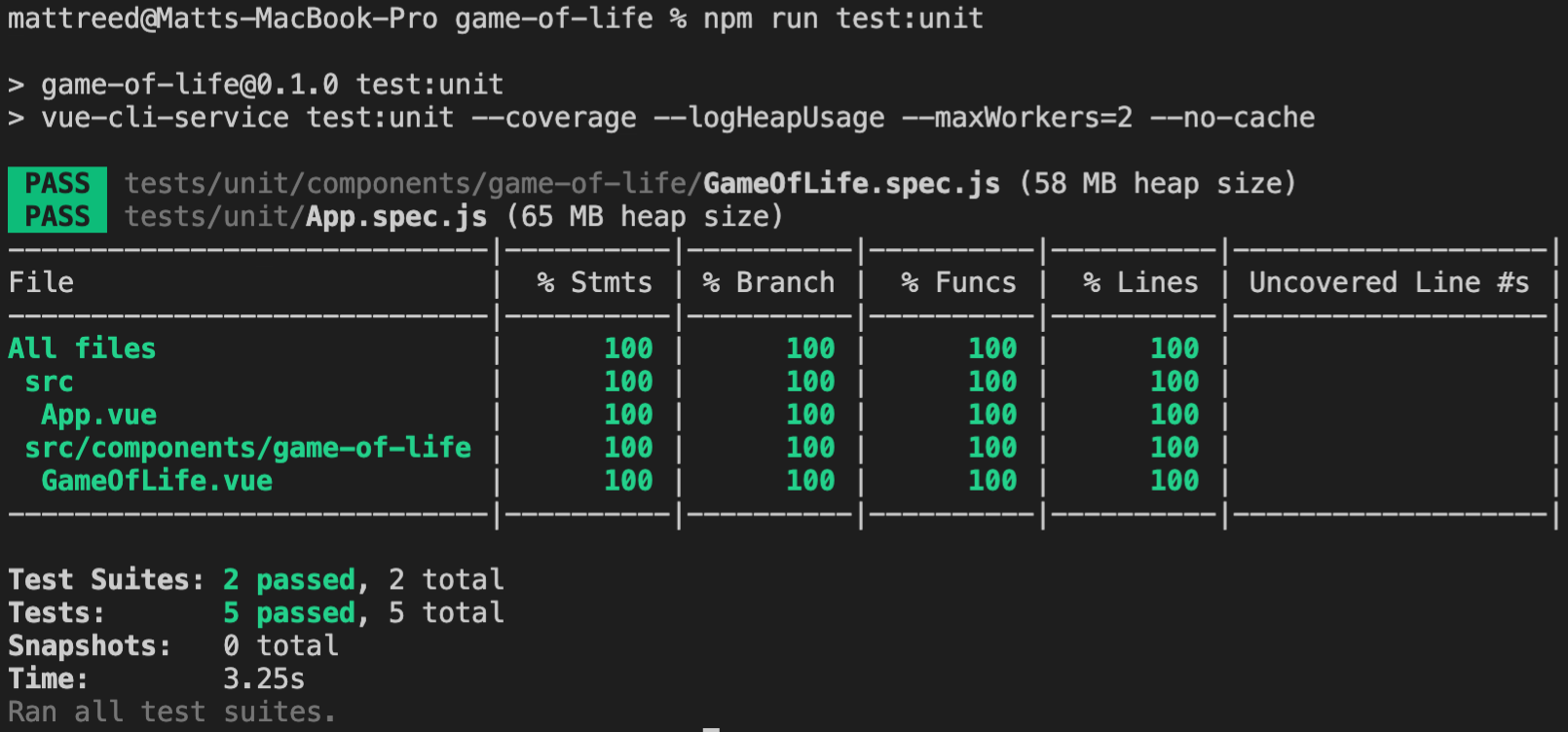
Awareness of where we are Headed
Thinking ahead while writing the tests to the TypeScript and refactoring steps, here are a few opportunities for improvement:
- The default "
grid" value of "[[false]]" within "data()" is an incorrect placeholder. - There are variable name typos, inconsistent function names, and confusing function responsibilities.
- The "
checkNeighbors" method requires more intricate tests. Due to this, and as the SonarLint extension suggests, the method's complexity needs reducing.

So what is the next step? Is it to refactor / add TypeScript? Or upgrade to Vue 3? Considering that Vue 3 is natively in TypeScript, performing the transition to TypeScript first is best. That way, an upgrade to Vue 3 would be even more straightforward. It could allow for more than just following the above guidance, like generating a new Vue 3 project then copying over the existing Vue components.
Reading the Room
What does everyone do at networking events when they initially enter the space? They scan the room for friends and coworkers, perhaps groups dressing or acting similarly, or maybe even congregating at the snack table or water cooler. The reason? Gaining quick familiarity with the event's ins and outs allows anyone to network with people more efficiently and comfortably.
The same behavior occurs when joining a web development project for the first time. To be a high-functioning contributor, a new individual will hit the parts of an application that tell its various functionalities (hence the look at the Vue GUI earlier). Are there tests that exist to show distinctions in functionality? What is the component or folder structure of parent-to-child relationships? How are the methods and variables named? Quick acclimation is the goal here.
Strongly-typed languages like TypeScript allow for better readability because methods and objects are well-structured. It is all about real-time feedback while developing the working code. Perhaps even more valuable is how the types can prevent exceptions from occurring during runtime, too.
Adding TypeScript and Fixing Inconsistencies
Add TypeScript via the Vue CLI by running the command:
vue add typescript
Important note: The first prompt, "Use class-style component syntax?" should be answered "no." While it is a popular style for writing TypeScript components in Vue 2, it is not fully supported in Vue 3 (for many reasons). Without getting too far ahead, answering "no" will make the Options API and Composition API implementations easier later on.
After deleting HelloWorld.vue and reverting App.vue, one of the first observations in GameOfLife.vue is how the "generateEmptyGrid" method shows a problem when adding the constructed row to the grid. This comes from the incorrect declaration within "data()" for the "grid" value of "[[false]]".
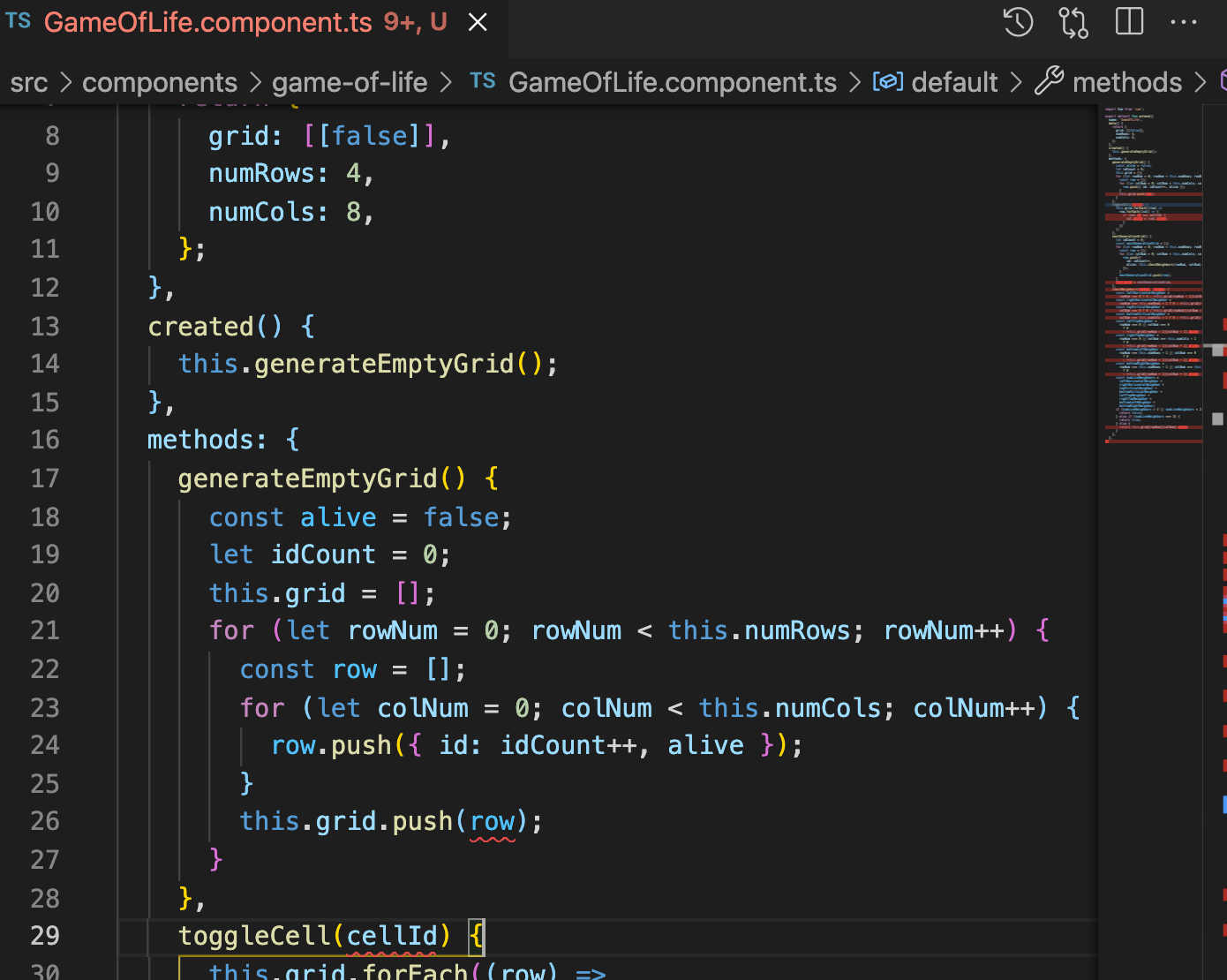
Instead, the initial value for "grid" should have been "[[{id:-1, alive:false}]]." Changing it resolves the problematic inconsistency. There is no more confusion thanks to TypeScript.
As is seen requested for "toggleCell" above, adding method outputs and inputs is required in TypeScript because strict checking is enabled in the tsconfig.json. Once done, the app runs as expected! But, the tests do NOT run. Checking GameOfLife.spec.ts, it seems the use of Vue.extend has broken the GameOfLife import. Unfortunately, in Vue 2, there is no easy solution other than this quick fix on the shallowMount Wrapper type. The addition of that means a new tradeoff. For Visual Studio Code users, the IDEs IntelliSense cannot help write new tests. In turn, it restores functionality to the existing test suite (modifying an "expect" will confirm). The good news is an upgrade to Vue 3 will correct this IDE type-checking problem.
Increasing Intentionality and Separating Concerns
Addressing the other two opportunities for improvement is possible with a passing test suite. Modifying the tests and the working code, change any variables or methods that could be more aptly named. All tests must pass again before continuing.
Code refactoring is a necessary part of software development for a few reasons. It is crucial when striving for a cleaner codebase to break down complex methods, especially if their responsibilities are ambiguous. Look at "checkNeighbors," for example. Are diagonal neighbors considered? Does it handle grid boundary cells? How do existing neighbors determine the next generation's grid of cell lives? Despite renaming "checkNeighbors" to a more descriptive name, this method's functionality remains vague. More work is necessary for further clarity.
Though the Vue template only calls "generateNextGenerationGrid," overall scoping smaller methods inside and outside a component is better for a project's longevity. Of course, utilizing TypeScript's enum and type/interface features can help. Consolidating similar lines of code is a worthwhile place to start. Extracting these lines into anonymous functions and externalizing them to separate files allows direct testing without going through the Vue Testing Utils. Not to mention, abstracting out code decouples the dependency on the "this" context of the Vue component.
Say Hello to the New Vue
The guidance for upgrading Vue 2 to Vue 3 previously shared highlights some limitations and preparations. It is worth keeping in mind while performing the upgrade. And for large-scale / production-level applications, it makes sense to do it that way. It reduces the risk of change by having an intermediary build.
Perhaps for smaller ones like this there is another way. The Vue CLI is capable of generating a new Vue 3 project. If it is possible to copy the existing Vue components directly over to this newly-generated one, upgrading will be effortless. If the files do not copy for whatever reason, the intermediary build is a fallback plan.
In a different directory, create the Vue 3 app via the Vue CLI using the same plugins as before: Unit-Testing (followed by selecting Jest) and TypeScript. In the original project, switch to a new branch. Delete the /src and /tests folders that came pre-loaded in the Vue 3 app and copy the Vue 2 corresponding directories over. Delete all files (except the .git and .gitignore) in the original project. Next, move the Vue 3 files over to the original project. Use the new branch to git compare changes between versions 2 and 3.
The most extensive differences are in the package.json and main.ts. Manually replace Vue.extend with defineComponent in the component files. This replacement restores IntelliSense completion in the tests after modifying the shims-vue.d.ts, as it then no longer requires this quick fix. With that, the app upgrade to Vue 3 is complete!
Keep On Changing
In this blog, we explored a transformational journey of the digital kind. Starting with a primitive Vue 2 app lacking any test suite or proper design principles, we converted it to a Vue 3 application written in TypeScript with reassuring code coverage. Change is hard to wrangle with, but it is happening all around us in the software industry. What makes software engineering especially difficult is keeping up with this fast pace of change.
We know Vue 2 will become outdated just as Struts has in front-end programming, Python 2 has made way for Python 3, and various other technologies that have come before now. This blog may not stand the test of time as individuals/companies/teams move on from Vue 2; hopefully, this blog reaches an audience somewhere that needs the information now to take more steps forward.
Our openness to cope with these shifting constructs and be ready for whatever is next is the key to innovation. So much of that mentality is recognizing the winds of change and having the courage to unfurl the sails. That is the "Positive Technology" mindset that Ippon strives to teach each and every consultant. If this article helped kick start your project's migration, contact us. We want to hear about your success story! Or, if you resonated with the potential activity you just read about, let's discuss how we may further guide you and your company's transformation.




Comments